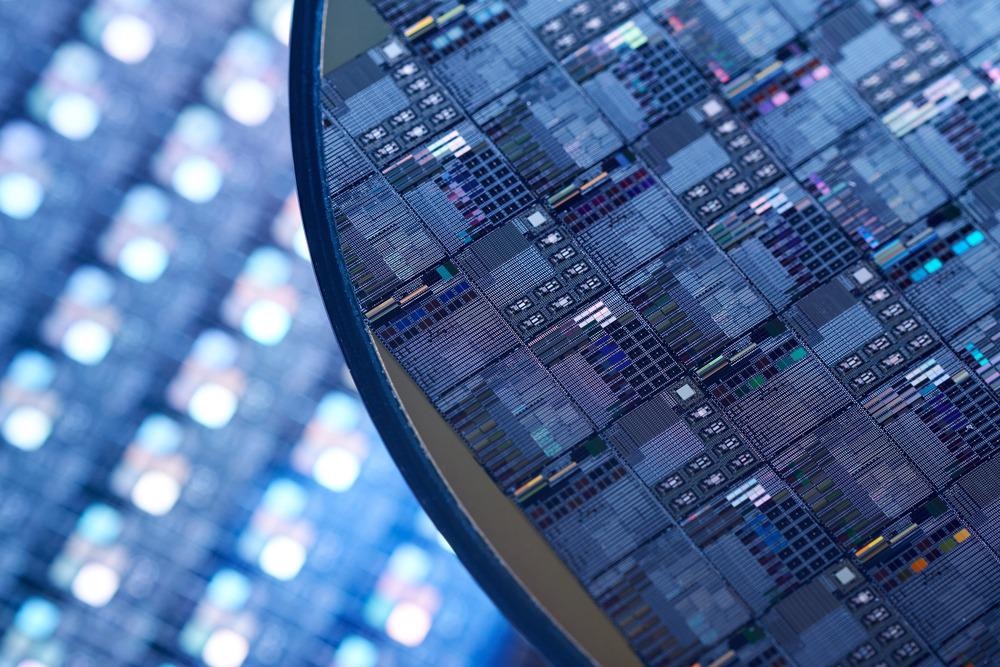An article published in the journal Materials Today Nano describes a novel approach of preparing composite materials to be used in next-generation lithium-ion batteries. The authors present an ingenious solution of utilizing silicon cutting waste powder by developing nanoporous composites of silicon which can then be used to manufacture high discharge capacity lithium-ion anodes with significant cycling performance.

Study: Nano-silver Actuated High-performance Porous Silicon Anode from Recycling of Silicon Waste. Image Credit: fotografos/Shutterstock.com
The worldwide need for superior fuels has spurred the growth of the renewable solar energy sector. A side effect of this upsurge in photovoltaic advancements is the substantial quantities of diamond wire saw silicon powder (DWSSP) formed throughout the photovoltaic cell production process.
As a result, the emphasis on developing viable solutions for recycling this silicon powder waste is increasing to protect the environment and enhance the sustainability of photovoltaic advancements.
An Introduction to Silicon
Silicon (Si) is at the forefront of scientific research, and for a good reason. It offers an extremely high theoretical discharge capacity combined with a minimal operating potential compared to typical graphite anodes and is plentiful on the planet. These qualities make silicon a prime choice of material for the future of large energy density lithium-ion batteries (LIBs).
Still, there are some challenges with using silicon: a significant volume change (up to more than 300 percent) in lithiation and delithiation processes fracture and pulverization of silicon particles, depletion of contacts between the materials of current collector and anode, and incessant production of solid electrolyte interphase (SEI) films. These drawbacks rapidly lower the discharge volume and initial Coulombic efficiency and degrade the cycling stability as well.
Nanostructured Silicon Anodes
A popular technique for overcoming these challenges is the use of silicon particles on the nanoscale. Nanoparticles, nanotubes, and nanoporous materials have all been used as materials for anodes in LIBs.
The electrochemical behavior of nanostructured multi-pored Si anodes is observed to be heightened. However, existing creation techniques of nanostructured Si often involve costly equipment or a demanding procedure. As a result, there is a pressing need to devise an uncomplicated and high-output technique to prepare porous nanostructured silicon.
The solar photovoltaic (PV) sector relies heavily on high-purity silicon, accounting for 95% of most products. The solar energy business is among the fastest developing sustainable energy sectors, growing at 40% to 60% each year.
A diamond wire saw is employed when crystalline silicon is to be cut into wafers for the fabrication of silicon-based photovoltaic cells. Around one-third of the silicon is lost during this process, which amounts to approximately 0.3 million tons of DWSSP waste generation per annum. DWSSP can be recycled, however, as it is mainly made up of pure silicon particles.
The study presented a novel way of recycling waste silicon powder by creating a multi-pored Si-based composite in the electrodes of high energy density LIBs. After crushing DWSSP chemically by etching with nanoscale copper, the silicon was used to encapsulate nanoparticles of silver to create silicon/silver nanocomposites with numerous pores.
The nanocomposites, when layered with carbon, demonstrated outstanding cycling performance. For said surface carbonization of the nanocomposites, dopamine was used. Nanoscale metal-aided chemical etching processes were utilized to produce silicon-copper and silicon-silver composites. Researchers also found that the use of nanocrystalline silver implanted in silicon-based nanocomposites improved electrical performance and restricted volumetric expansion.
These findings point to the possibility of recycling DWSSP to create porous silicon-based nanocomposite anodes for LIBs with high electrical output. This study introduces a novel technique for high-utility silicon cutting waste use and a practical way for producing porous silicon-based nanocomposite LIB anodes with exceptional performance.
Conclusions
The synergized impacts of the multi-pored Si matrix, carbon coatings, and silver particles improve the overall performance of silicon-nanocomposite-based anodes by enhancing the conductive capabilities and boosting lithium-ion diffusion efficiency and structural integrity.
Tunable silver cation discharge during manufacturing is critical for the formation of well-spread silver nanoparticles. The production of porous Si structures with homogeneous spreading of Ag nanoparticles is enabled by nanometal aided etching method, making this a potential technique for preparing silicon-based nanocomposites for anodes in lithium-ion batteries.
Continue reading: Modeling Wing Nanostructures to Improve Solar Technologies.
References
Zhang, Z., et al., (2021) Nano-silver Actuated High-performance Porous Silicon Anode from Recycling of Silicon Waste. Materials Today Nano. Available at: https://www.sciencedirect.com/science/article/pii/S2588842021000547?via%3Dihub
Disclaimer: The views expressed here are those of the author expressed in their private capacity and do not necessarily represent the views of AZoM.com Limited T/A AZoNetwork the owner and operator of this website. This disclaimer forms part of the Terms and conditions of use of this website.